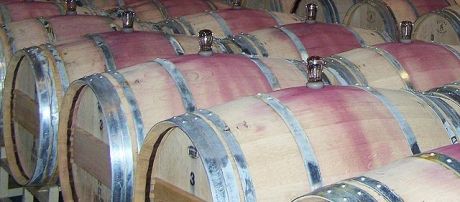Oak is a rather knotty subject – no pun intended. For the effects of aging wine in oak barrels are actually subject to a wide variety of factors.
For a start: is the oak French or American? Then – how big are the barrels? How toasted is the oak? How new is the oak? How long is the wine kept in it? What’s the wine like in the first place?
Rather a lot of questions. To think about it all let’s start by considering how oak works. Putting wine in an oak barrel has two sorts of impact: physical and chemical.
Oak is slightly porous, and permits a continuous low-level oxygenation of the wine, helping it soften and deepen and speeding maturation. It also permits some evaporation – concentrating flavours and aromas. This can be up to about 10% a year though I would expect it to be much less in most quality wines.
The second effect is chemical – the oak itself leeches compounds, mainly phenolic, into the wine. This can contribute quite strong flavours, the most famous being vanilla and sometimes coconut (produced by Vanillin in the oak). In addition one gets spice and clove notes (from Eugenol); caramel and sweet flavours (from Furfural) and smoky or charred hints (from Guaiacol). Oak also imparts tannins (ellagitannis) to the wine from lignin in the wood.
All these factors vary depending on the origin of the wood. American oak is faster growing than French and has wider grain and less tannins. However it imparts two or three times as much sweet and vanilla compounds – mainly due to grain, not the levels in the wood. In addition French oak is usually seasoned (left outdoors in a wet cool climate) for up to three years. This increases the cost but reduces the harsher tannins and other “rough” compounds. In addition French barrels are usually toasted to some degree in their assembly by a cooper. Toasting reduces the general oak flavour and tannins but increases vanillin and eugenol, and heavy toasting can contribute smoky and charred notes. Many higher end winemakers will use oaks from several different forests and coopers to balance slightly different impacts on the wine.
One also sees oak used from Hungary (softer influence of a wide range of flavours), and Slovenia (very tight grained and subtle impact) – most famously in long-use, larger barrels for Barolo.

Whatever the origin and the level of toast, the influence of a barrel is also determined by the size. The larger the barrel the lower the ratio of the internal area (which is the part in contact with the wine) to the total volume, so the impact is diluted.
Most famously the impact of oak on the wine decreases steeply with time. The first year in an oak barrel “uses up” the majority of oak impact (although this is a simplification see http://cantoncooperage.com/pdf/WV_July2014_Types-of-grain-elevage.pdf ), and after 3, 4 or 5 years the impact is negligible. Hence most winemakers who employ oak will use barrels in a three or five year cycle.
The most typical example of this cycle is in Bordeaux where many winemakers will use 225 litre (300 bottle) Barriques: one-third new, one-third second-year and one-third third-year. This means, when the wine is bottled, two-thirds are used for the next vintage with several new barrels, and one-third sold on or put to another use. This adds over £1 a bottle to wine production costs!
Of course there are variations to this standard cycle. Some Châteaux will use a two-year cycle and some a five-year cycle. Very roughly the former will have over 2 times as much oak influence in the wine as the latter. We will, in fact, taste two such examples at this month’s tasting.
The other famous, or infamous, examples of oaking are Chardonnay and Rioja. Many will be familiar with the extreme New World Chardonnay – reeking of vanilla, pineapple and having creamy notes from malolactic fermentation. A ham-fisted attempt to replicate rich white Burgundy, and an abomination in my view and thankfully in fast retreat. However subtle oak can amplify good qualities in this rather easily flavoured grape. I have met Montrachet growers that have barrels on a 20 year cycle – so 5% new oak!
Rioja on the other hand, with substantial new American oak admits significant vanilla flavours but long aging also allows earthy cedar and herb notes. Most importantly – the basic wine has sufficient structure to bear this handling.
When this topic came up I thought it would be too easy just to show wines with 100% new oak against wine with no (or only old barrel) oak at all. Most tasters would find the comparisons so easy, divergent (and in most cases leading to a simple good v bad conclusion) that little would be interesting about it. So I decided to concentrate on more common, subtle and well-judged variations in oak use. We will try three pairs of wines.
I have mentioned one already – Bordeaux (Cab. Sauvignon dominated) aged in Barriques on a 2 year and a 5 year cycle.
Tempranillo, given a classic (very oaky) treatment from Rioja and a much more restrained use in Ribera.
And finally White Burgundies from the same grower and appellation with zero and 30% oak!
Notes will be posted in 4 or 5 days time…
Until then….


Thanks! This is really interesting